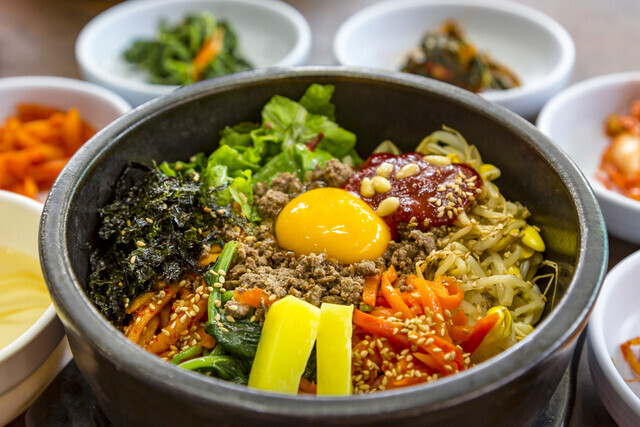
Bibimbap, a beloved Korean dish, is a vibrant and flavorful masterpiece that showcases the diversity of Korean cuisine. The name itself, "bibim," meaning "mixed rice," aptly describes the process of combining a medley of ingredients over a bed of warm white rice.
Traditionally, bibimbap features a colorful array of seasoned vegetables, such as spinach, carrots, bean sprouts, and zucchini, often stir-fried to perfection. A crowning glory of a fried egg, along with savory minced beef, adds richness and protein to the dish. To complete the ensemble, a dollop of gochujang, a fiery red pepper paste, is added, infusing the dish with a tantalizing heat.
The beauty of bibimbap lies in its versatility. While the classic version remains a favorite, chefs and home cooks alike have taken creative liberties, incorporating a wide range of ingredients to suit different tastes. From seafood bibimbap to vegetarian bibimbap, the possibilities are endless.
The annual Bibimbap Festival, held in Jeonju, a UNESCO-designated Creative City of Gastronomy, is a testament to the dish's cultural significance. This vibrant festival celebrates the diverse world of bibimbap, showcasing its regional variations and innovative interpretations.
Whether it's a simple, home-cooked meal or an elegant restaurant dish, bibimbap continues to captivate taste buds worldwide. Its colorful presentation, harmonious blend of flavors, and nutritional value make it a truly delightful culinary experience.
source : Global Economic Times(https://www.globaleconomictimes.kr)
[Copyright (c) Global Economic Times. All Rights Reserved.]





























